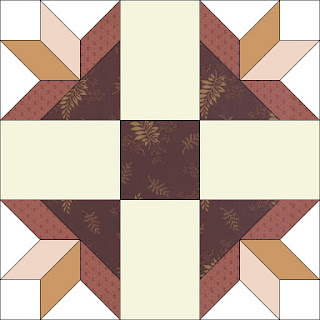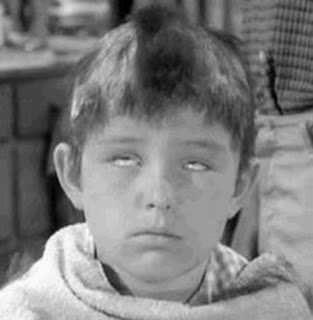Quilt attributed to Lucretia Coffin Mott (1793-1880).
#1967.0016.001
Collection of the Nantucket Historical Association
Lucretia Mott was born on Nantucket Island, Massachusetts
and visited family there throughout her long life.
Lucretia Mott was an extremely energetic and liberal thinking woman. Reading her biography is exhausting---While I am sitting on the porch reading about her she would have made 12 pies, dropped into House of Industry to check on the sewing projects the poor women were finishing and written six newspapers editors to tell them what's what.
Lucretia Mott sat for this portrait by
Joseph Kyle in 1841 when she was in her late forties.
Collection of the National Portrait Gallery at the Smithsonian.
Sitting still was not her skill area.
Of course she made quilts. I've only found one attributed to her, the detail at the top of the page, but she wrote many letters and did mention quilts and quilting.
The letter is from Palmer's Selected Letters of Lucretia Coffin Mott.
Scroll down to see the reference.
In 1879 at 87 years old she, in her usual breathless fashion, told of a trip where she spied two quilts at the House of Industry [at least I think that is what she is talking about]:
"For $2 buying and bring away a very pretty red patchwork quilt red & mixed-calico not large---which I have concluded to send to Will & Nellie's attic spare chamber. She left another not so pretty which will do for Hannah's room..."
Women sewing in the House of Industry.
The Quakers provided a safe place to work and customer connections for women who
sewed for a living.
House of Industry about 1870 at
714-6 Catherine Street.
Free Library of Philadelphia
A 1919 city director describes the work of the House of Industry:
"b) Make new quilts and recover old ones. Products sold. Orders taken."
Read a little more about the House of Industry in its various incarnations as a female empowerment association:
Had it been 1859, Lucretia Mott would probably have passed up that red calico quilt. Mott and her husband were leaders in the Quaker antislavery movement and they felt strongly about abstaining "from the products of the slaves' labor": cotton, sugar, molasses, indigo, tobacco and rice.
James and Lucretia Mott enjoyed a long, companionate marriage.
When first married, her husband was partner with her father in James Mott and Company at 45 N. Front Street, a Philadelphia business selling cotton and wool fabrics. He was what was called a commission merchant, a retailer.
The Anti-Slavery Alphabet book
condemned the Merchant of the north.
In 1826 James Mott helped organize the Philadelphia Free Produce Society and gave up the cotton trade, specializing in wool fabrics. He and Lucretia also ran a Free Produce Store. For the store they sought substitutes and certified non-slave produced items. The family cooked "Anti-Slavery Sweets," candy without sugar or molasses made more palatable by a rhyme in the packaging.
"Sweet as these sweets are, yet sweeter still
The soil that Freemen tread and Freemen till."
A free-produce sugar bowl from the collection
of the Museum of the City of London.
Certified free labor sugar came from India.
Ruth Ketring Nuermberger, in The Free Produce Movement: A Quaker Protest Against Slavery described some of the rhetoric intended to influence women.
"The Society appealed to women generally to exert their influence by abstinence from slave labor products, and by instilling in their 'offspring a deep-felt sense of their duty [to give] the preference to the products of free labor.' ... It is true, some inconveniences will at first be unavoidable, the texture of your garments will perhaps be coarser than that of your accustomed wear, but they will cling less heavily around your forms, for the sighs of the broken-hearted will not linger among their folds...."
The James and Eleanor Clark family, English Quakers and textile producers,
all dressed in free labor cotton.
Courtesy of the Library of the Religious Society of Friends, London.
From Anna Vaughn Kett's dissertation.
Scroll down to see the reference.
The only acceptable cotton was Free Labor Cotton, of which very little was raised, sold or manufactured into cloth. So Quakers who abstained wore linen, silk and wool. These fibers seem luxurious to us today, but in the 1820-1850 period cotton was relatively novel, much too "gay" and quite fashionable. For decades Quakers had been wearing subdued silk and woolen (and combination fabric) clothing because cotton was perceived as too worldly.
Lucretia Mott's acceptance of plain clothing was not the sacrifice it might have been to a 20-year-old Unitarian or Methodist. But certainly rejecting slave-grown cotton in a fabric business was a sacrifice for the Motts, who had their financial ups and downs over the years, primarily due to their consciences.
This has been a long story to give us some background into the quilt attributed to Lucretia Mott by the Nantucket Historical Association. It was donated by one of her descendants Mrs. J. C. Richard Heckscher who also gave James Mott's waistcoat.
All we have to see online is a detail, which shows a quilt that seems to be silk and wool fabrics (some perhaps mixed fabrics of different yarns); the face seems very consistent with Quaker wardrobe. The shinier fabrics may be silk, some of the duller stripes seem to be wool. The gray check, a very small and not very gay (silk?) check, fits the Quaker palette.
The back of the quilt is hard to figure out from a photo. Could it be a print, overdyed blue to make it plainer?
Lucretia Mott tends to be overlooked today as a feminist and antislavery hero, eclipsed by women younger than she, but her life is fascinating (well ----perhaps, interesting is a better word.) She had an attitude.
Photograph of Executive Committee of the
Pennsylvania Anti-Slavery Society, 1851
Back Row: Mary Crew, Edward M. Davis, Haworth Wetherald,
Abigail Kimber, Miller McKim,Sarah Pugh.
Seated: Oliver Johnson, Margaret Jones Burleigh,
Benjamin C. Bacon, Robert Purvis, Lucretia Mott, James Mott
The book I dawdled my time away on was Valiant Friend: The Life of Lucretia Mott by Margaret Hope Bacon. Bacon also wrote Mothers of Feminism, The Story of Quaker Women in America and the book reflects her knowledge of Quaker life and the early women's movement.
I'm also reading Mott's letters in Selected Letters of Lucretia Coffin Mott, edited by Beverly Wilson Palmer. Read the biography before tackling the letters.
See a preview of her letters with a reference to her and her mother differing on whether the quilt in progress needed a border or not.
Want to know more about LCM? See the Lucretia Coffin Mott Papers Project at Pomona College:
http://www.mott.pomona.edu/
Detail from Sarah Wistar's quilt
made by women who worked at the House of Industry
in the 1840s.
Read about two other House of Industry quilts at the excellent history blog Quaker Quilt History:
Patricia T. Herr," Quaker Quilts and Their Makers," in Jeannette Lasansky, Pieced by Mother, Symposium Papers (Lewisburg, PA: The Oral Traditions Project of the Union County Historical Society, 1988), 13.
Read more about the Free Produce Movement & Quaker fabric choices:
Anna Vaughn Kett. "Without Consumers of Slave Produce. There Would Be No Slaves. Quaker Women, Antislavery Activism, and Free-Labor Cotton Dress in the 1850s."
Quakers and Abolition, edited by Brycchan Carey, Geoffrey Plank.
Anna Vaughn Kett.
Quaker women, the Free Produce Movement and British anti-slavery campaigns : the Free Labour Cotton Depot in Street. Dissertation.
Ruth Ketring Nuermberger,
The Free Produce Movement: A Quaker Protest Against Slavery (Durham, NC: 1942). Available on line.
Emma Jones Lapsansky, & Anne A. Verplanck.
Quaker Aesthetics: Reflections on a Quaker Ethic in American Design.....






















































